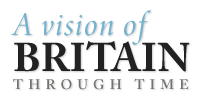 A vision of Britain through time
A vision of Britain through time
A vision of Britain from 1801 to now.
Including maps, statistical trends and historical descriptions.
 A vision of Britain through time
A vision of Britain through time
A vision of Britain from 1801 to now.
Including maps, statistical trends and historical descriptions.
1881 Census of England and Wales, Tables: Ages, Condition as to Marriage, Occupations and Birthplaces of people, Table 10 : " Occupations of Males and Females in the Division and its Registration Counties".
| Show Taunton RegD/PLU table | Stoke St Mary CP/AP |
|---|
Click on the triangles for all about a particular number.
Notes:
The following notes to the table appeared in the original report.
| 1 | This table is a very special case: The original Table 10 as published by Division in the 1881 census reports was limited to data for Registration Divisions, their component Registration Counties, and just those Urban Sanitary Districts with populations of over 50,000. Data presented here for counties and higher-level units are taken from the published reports, as usual, but we also include in A Vision of Britain through Time data for Registration Districts, sub-Districts and Civil Parishes which never appeared in the original reports. These were specially created for us by the History Data Service at the University of Essex and derive from the complete transcription of the individual-level Enumerators Book data coordinated by the Genealogical Society of Utah. |
| 2 | In creating these data, each occupation listed in the enumerators books has been assigned as far as possible to the relevant category used in the published reports, but some additional categories with labels in square brackets unavoidably appear. Unlike the published statistics for higher-level units, these specially-calculated data for districts and parishes include persons under 15 or over 65. For these and other reasons, no attempt has been made to ensure that county totals for the districts or parishes match the published county totals. The remaining notes are those that appeared below the original published table. |
| 3 | NOTE.--Persons returned as engaged in more than one occupation have been referred to the one that appeared to be of most importance; or if there was no difference in this respect, to the one first given by the person in his or her return. In some cases special rules have been followed: e.g. "Clergyman and Schoolmaster" in combination has always been referred to "Schoolmaster"; a Member of Parliament or Peer engaged in any branch of commerce or industry has always been referred to this latter, not to "Peer, M.P.". |
| 4 | The numbers returned under any heading include Labourers, Apprentices, and Assistants, as well as Masters, but not Clerks, Messengers, Errand boys, Porters, or Watchmen, for which occupations there are special headings. Civil, Military, and Naval Clerks, Law, Bank, Insurance, and Railway Clerks, and Government and Railway Porters, are, however, exceptions to this rule. Many young persons, being Apprentices or Assistants, have therefore been referred to occupations usually followed by adults. Women also, chiefly widows or orphans carrying on the business of their deceased husbands or fathers, will sometimes be found under occupations commonly followed by men only. |
| 5 | Persons returned as retired from any business have not been referred to that business. Inmates of workhouses have been referred to their trades, unless their age or infirmities showed that they were past work. But persons who might be supposed to be only temporarily separated from their usual employment, such as Prisoners, and Patients in General Hospitals, have been classed under their usual occupations. |
| 6 | In some cases, for convenience of space, the male designation, e.g. "Schoolmaster", alone is given, instead of "Schoolmaster, Schoolmistress". |
This website does not try to provide an exact replica of the original printed census tables, which often had thousands of rows and far more columns than will fit on our web pages. Instead, we let you drill down from national totals to the most detailed data available. The column headings are those that appeared in the original printed report. The numbers presented here, which are the same ones we use to create statistical maps and graphs, come from the census table and have usually been carefully checked.
The system can only hold statistics for units listed in our administrative gazetteer, so some rows from the original table may be missing. Sometimes big low-level units, like urban parishes, were divided between more than one higher-level units, like Registration sub-Districts. This is why some pages will give a higher figure for a lower-level unit: it covers the whole of the lower-level unit, not just the part within the current higher-level unit.
Acknowledgments:
We are grateful to the following contributors. If you make use of the data in your own work, please follow any instructions given here on acknowledgment and re-use.
(1) Kevin Schurer (Department of Geography, University of Cambridge). Role: editor. Restrictions on use: the data cannot be accessed, although the Vision of Britain system may present them graphically (any other use requires the contributor's permission.)
(2) Matthew Woollard (UK Data Service, University of Essex). Role: editor. Restrictions on use: the data cannot be accessed, although the Vision of Britain system may present them graphically (any other use requires the contributor's permission.)